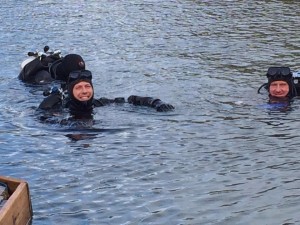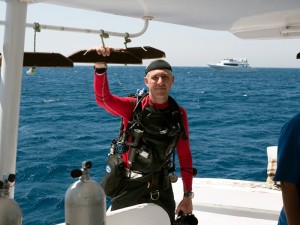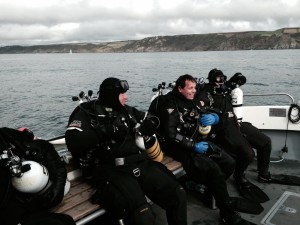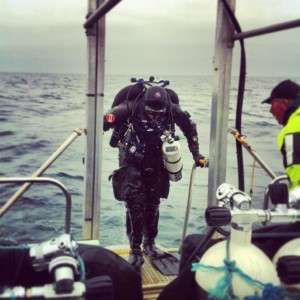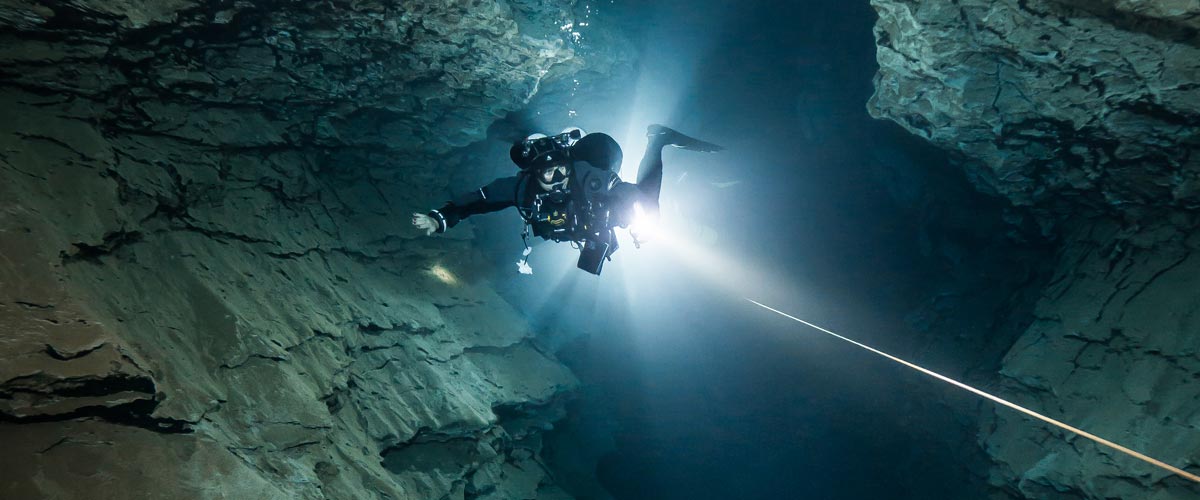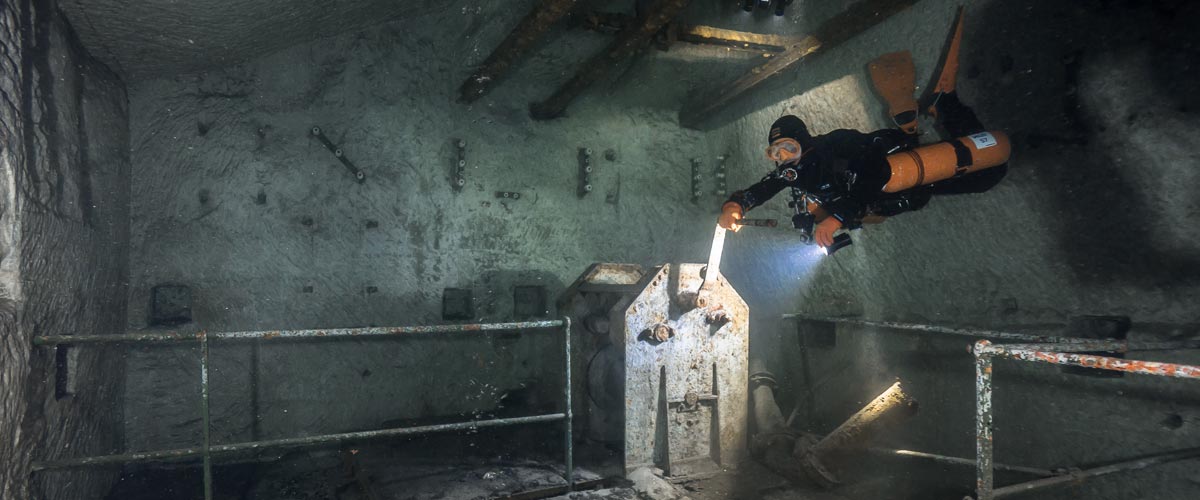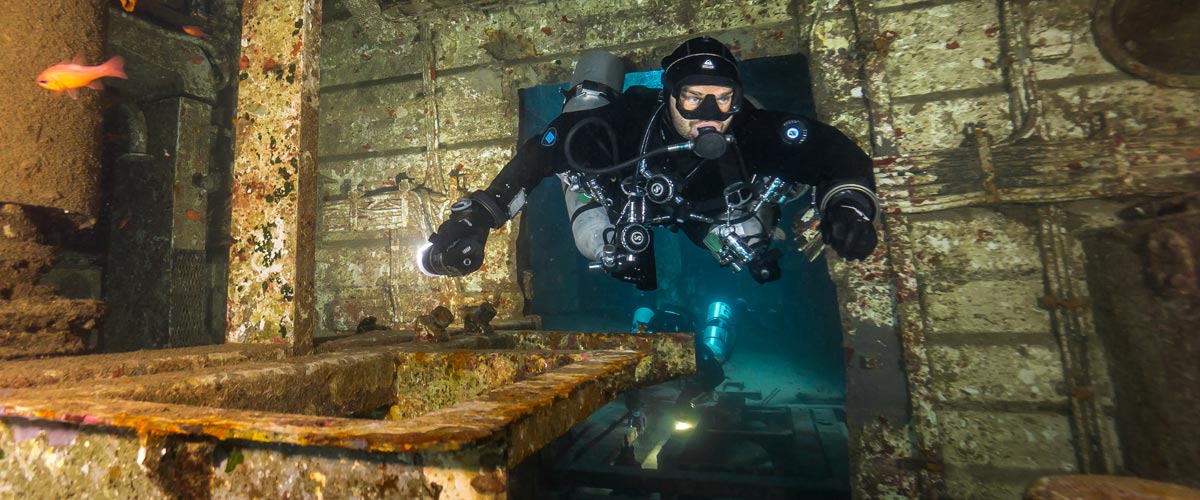Dive Training Blogs
Scuba diving courses – Six things you were told that ‘just ain’t necessarily so’
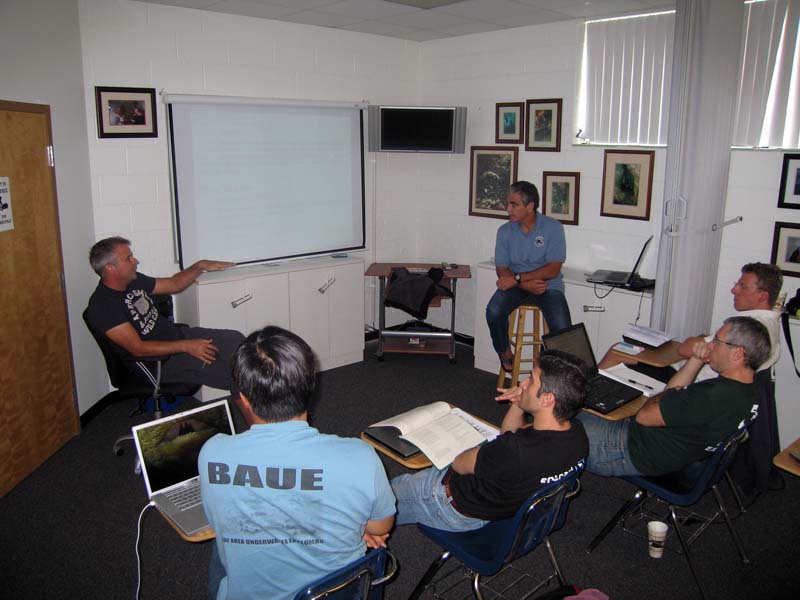
Sometimes bad habits and half-truths find their way into all elements of our lives. Those small snippets of information that sound like they should work or you just assume that that’s the way things are done (have you ever put a spoon in an open bottle of champagne to stop it going flat in the fridge?)
Well scuba diving is just the same. It’s full a little quirks that have become either part of courses’ ‘folklore’ or have become a standard, de facto or otherwise. Well I have a list of a few that I know of – perhaps you have some of your own! I would love to hear them.
Drink water, not caffeinated drinks before and after a dive as dehydration is a leading cause of DCS
I can’t count the times that a well-meaning DM or instructor has offered me a drink of water right before or after a dive to ‘reduce my chances of DCS’. Whilst a cup of water is always welcome on a hot day, a single cup of anything is unlikely to affect my body chemistry enough to be the deciding factor in a bend. Maintaining a normal level of body fluid is something that needs to be an ongoing process that is difficult enough even when not diving. The best evidence is that severe dehydration is only one of a number of possible contributory factors to DCS and it may just cause symptoms to manifest themselves more acutely than they would otherwise. Monitoring the colour of your urine output (pale) is still the best guide to your pre-dive hydration and being mindful of all the factors you can influence to reduce your chance of a bend.
Don’t wear your mask on your forehead, it’s a sign of a panicking diver
No, a diver calling for help or splashing for attention or trying to stand on you is the sign of a panicking diver. A mask on the forehead is the sign of a diver making themselves comfortable at the surface if they so choose. I would be careful in a breaking swell as I don’t want to lose my prescription mask, but in still water after a cave dive for instance it can be a comfortable place to put my mask.
It’s essentially the worst place to hold a cutting device and can even become entangled in fishing line, causing the problem it’s there to solve. Somewhere around the middle of the body that can be accessed by either hand is best place to keep a small knife, line cutter or trauma sheers. It’s makes them easy to get at pretty much regardless of body position, be located by a buddy and cost a fraction of the cost of some ‘dive knives’ I see on peoples legs.
Always wear a snorkel
They have their place I admit it. That is in my kit bag. OK so some agency instructors have to have one as part of their training standards, and you were probably sold one on your first course (can you see a connection there?) I see divers on boats where the snorkel is actually getting in the way and may cause a problem. If you need to surface swim, do it on your back. If you are at the surface at the end of a dive in a breaking swell keep your regulator in. Trust me, it’s OK to take it off now (see, no dive police).
Always surface with 50 bar in your tank
Why? What am I supposed to do with it? Does that tell me at what gas pressure I start back to the surface with? No of course not and that really is the important pressure to know, when to START the ascent and head home (cave divers call it ‘turn pressure’). You need to know how much gas you AND a stressed buddy are going to need to make nice slow, safe ascent if you are sharing gas and it’s way more than you think (I will show you how to work that amount out in another blog).
Don’t go into deco
Everybody who is diver and is reading this has made a deco dive. Think about it – by definition, if you are ascending and reducing the ambient pressure around you then you are starting to move the Nitrogen out of your body tissues; this is decompression. Ascending, off gassing, supersaturation and decompressing are all the same thing, it’s just that when diving within recreational ‘No decompression limits’ the amount of deco you have to do is less or the same as your ascent time without stopping. So the problem isn’t deco as such but there are three issues that a recreational diver does not have the proper training to manage (and are what technical training courses will start to cover). They are not knowing how long their ascent time needs to be based on their bottom time, at what depth they must make their stops, how long they have to be and most crucially if they have enough gas to perform that ascent. So unplanned deco is really our culprit… so get some training!
So these are my diving myths busted; there are dozens more. It comes down to being a thinking diver, constantly evaluating and questioning what is presented to you (as a ‘fact’ in diving is rarely every so).
Blog courtesy of www.divelife.com.
Blogs
Intro to Tech: What is it about?
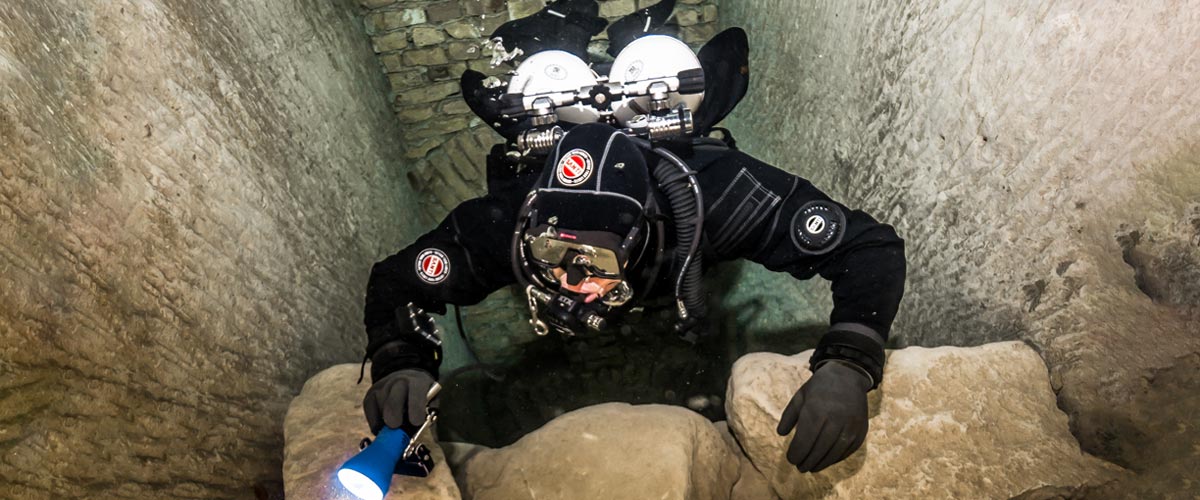
Article by José Pablo Mir
Pictures by Cezary Abramowski
The world of technical diving is exciting. It opens the door to new sites, depths, and bottom times. More importantly, it opens our minds to a new way of planning, facing, and experiencing dives, even those not purely technical.
Becoming a technical diver is a process, and like in other aspects of life, we should find the proper entry point that suits us best based on our knowledge and experience. The Introduction to Technical Diving course from TDI -the world’s largest and most recognized technical diving teaching organization- is the best option for divers who have yet to gain experience in the fundamental aspects of this new practice. The course’s content and its embrace of new techniques and technologies make it possible to acquire a solid foundation to learn and gain experience in this practice properly.
Becoming a technical diver is not something that happens overnight, whether deciding to become one or receiving a certification card stating we are now technical divers. It is a slow process extending farther away than any introductory course. It requires effort and dedication. But it will bring us satisfaction from day one -or two.
It is a matter of mentality
First, we must understand and accept that technical diving, involving greater depths, longer bottom times, exotic gases, virtual or real ceilings, and more, comes with higher levels of risk than the sport diving we have been practicing until now.
Although this discussion usually starts with a warning about risks, as I’ve done in the previous sentence, our practice is not a game of chance.
Technical diving is a rational activity that requires maturity and good judgment, and we will put everything into ensuring that each dive is a successful one -meaning we return from it safe and sound. With this understanding, we will strive to establish a mental attitude more aligned with our practice and its realities.
This new “technical diver” mindset we will develop will lead us to be more cautious in our executions, more analytical in our plans, more rational in our strategies, and more detailed in our procedures.
Experience will keep teaching us to know ourselves better, to keep our anxiety and other emotions under control, and to manage our impulses. Over time, our senses will sharpen, and we will be more attentive to the particulars of the situation we find ourselves in.
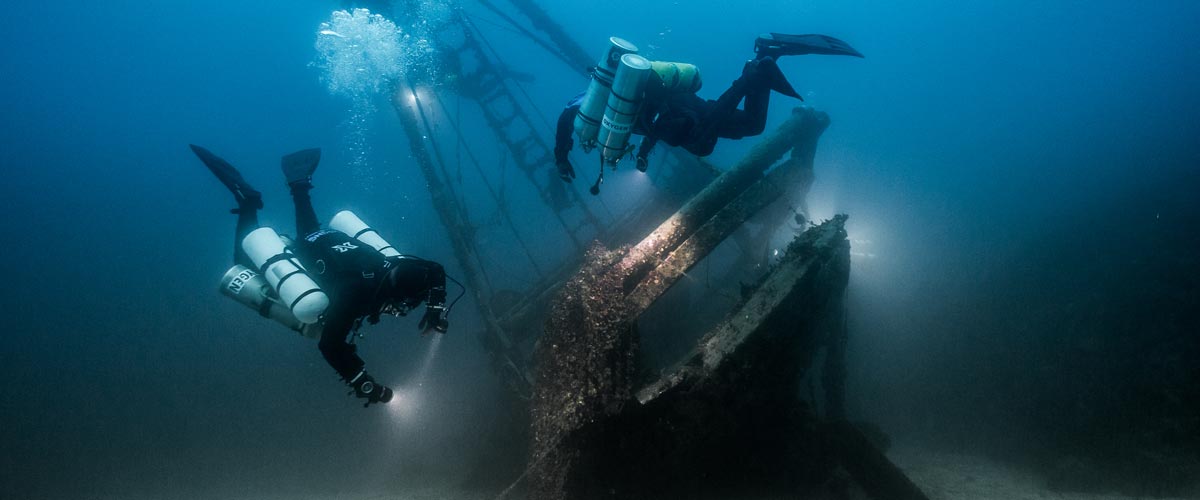
Strategies and procedures
Our strategies, those broad guiding lines tracing the path to follow, from how to approach planning to where, with what, and how we are willing to get there, will be more specific and more practical. Not because they magically become so, but because we will consciously and deliberately frame them that way.
We will establish clear, concise, and realistic procedures. Not only for the undesirable situations that may present themselves but also for those that are part of our dive objectives.
Even though, as technical divers, we often use equipment different from what we were previously accustomed to, it is essential to note that the gear does not make the diver. In a way, we could consider such equipment as the necessary tools to implement what our goal seeks to achieve, according to our strategies and procedures.
Technique plays an important role
We must put our greatest effort into learning and perfecting the different techniques we will be acquiring. Buoyancy, trim, propulsion, cylinder handling, deploying DSMBs and lift bags, valve drills, and more are essential skills we must begin to master to progress in our art. What we cannot do, when we need to do it, can harm us.
Our techniques must be effective and achieve the purpose for which they were devised. But they must also be efficient and require the least resources possible, including the time they take and the effort they demand. Effectiveness and efficiency will prevail over beauty and other considerations that may come to mind, although none of them should be mutually exclusive. A technique executed efficiently and effectively tends to have an inherent beauty.
Refining techniques is a lifelong mission. Some of them will be easy to master from the go; others, on the other hand, will be our life mission and will require many repetitions just to resemble the idea we have in mind of how they should be executed.
We must consider the environment
Our learning, the needs and musts of the practice we engage in, the experience we gradually gain, our strategies and procedures, and even our equipment and tools change with the environment.
Diving in the ocean, everything about us must be suitable for ocean dives. Conditions there rarely emulate those found in a pool, lake, or river. Variable winds and currents, greater depths, visibility conditions, other divers with uncertain skills around us, marine life, maritime traffic, distance from the coast, and many other factors add complexity and uncertainty.
It is never necessary to master the pool on the first day, but planning and aspiring to gradually cope with the ocean’s conditions is essential.
The cost of good training
We are aware that our resources are often scarce in relation to the possibilities of use we could give them if they were not. To a greater or lesser extent, we are part of the economic reality in which we are embedded.
Fortunately, the cost of good technical diver training is not an entry barrier. Comparing training and equipment costs, we see that the former are generally lower. Yes, lower cost for personalized service, essential to our future
performance and safety, than for a series of mass-produced products that are mere, albeit necessary, tools for an end.
The value of good training
The value of the training we received encompasses a range of characteristics, from emotional and methodological to technical and technological. TDI and its Introduction to Technical Diving course offer a deep and modern approach, with a teaching strategy that aims to create thinking divers, not merely obedient ones.
As technical divers, our knowledge is our primary tool. In this type of activity, what we don’t know can harm us.
Is this course optional?
Unfortunately, the fact that this Introduction to Technical Diving course is not a prerequisite for any subsequent training is an invitation to consider it optional. And we all know what usually happens to “optional” under budget constraints.
However, this course should be seen as optional only by those divers who are somehow familiar with the use of technical equipment, who have a mindset more in line with the requirements of this type of diving, who plan and execute the dives the proper “technical” way, who know their gas consumption rate, who are not intimidated by non-decompression tables, who feel comfortable using their dive computers, and know the techniques and have at least an acceptable level of buoyancy, positioning, and propulsion. Those can go straight to a more advanced training course, such as TDI’s Advanced Nitrox.
We must ask ourselves whether or not we are in that group.
Remember our goal: to have fun
Recreational diving is our passion. Jumping into the water carrying heavy equipment and having properly dotted our I’s and crossed our T’s have only one ultimate goal: fun. This is the activity we have chosen as a hobby. We must enjoy it; it must give us pleasure and make us vibrate.
Having a good time is not optional!
Blogs
Four opportunities to go pro in 2024 with Dive Friends Bonaire
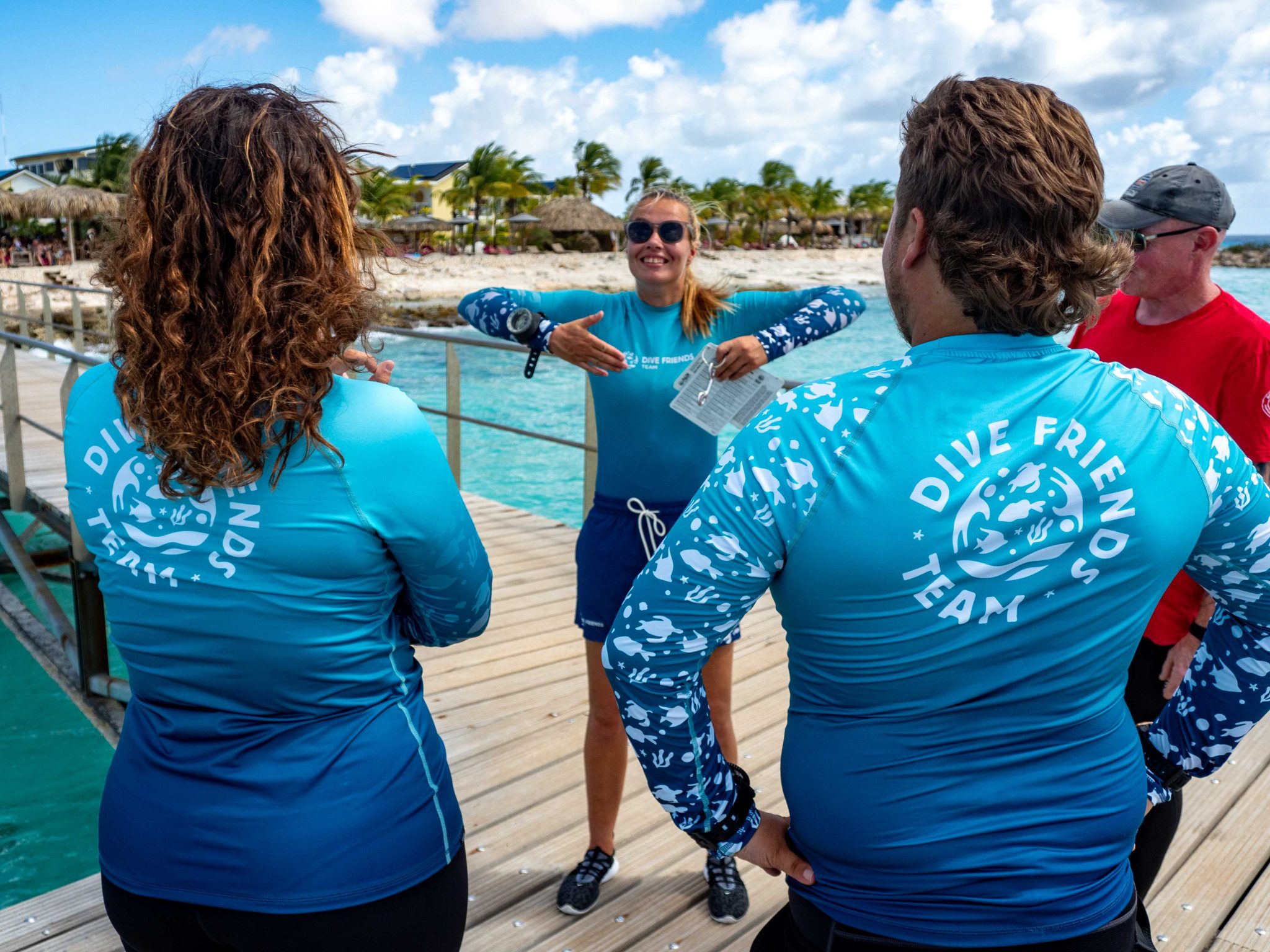
Dive Friends teaches the Instructor Development Course (IDC) several times a year to students who are eager to share their passion for diving with the world.
Dive Friends is known for the personal approach throughout the course. Their in-house course director will lead the students through every essential step, mentoring them to achieve their fullest potential as a dive instructor.
Applications for the following IDC start dates are now open:
- 12 April
- 5 July,
- 20 September
- 29 November
Partnership with Casita Palma
If the student opts for the IDC-Deluxe or IDC-Supreme package, their accommodation will be arranged for them at Casita Palma. This small and quiet resort is within walking distance from Dive Friends Bonaire’s main dive shop location and has everything you need to relax after an intense day of IDC training. Breakfast is included, so the student will always be fuelled and ready for their day.
Contact Dive Friends Bonaire’s Course Director Eddy for more information: coursedirector@divefriendsbonaire.com.
-

 News3 months ago
News3 months agoHone your underwater photography skills with Alphamarine Photography at Red Sea Diving Safari in March
-

 News3 months ago
News3 months agoCapturing Critters in Lembeh Underwater Photography Workshop 2024: Event Roundup
-

 Marine Life & Conservation Blogs2 months ago
Marine Life & Conservation Blogs2 months agoCreature Feature: Swell Sharks
-

 Blogs2 months ago
Blogs2 months agoMurex Resorts: Passport to Paradise!
-

 Blogs2 months ago
Blogs2 months agoDiver Discovering Whale Skeletons Beneath Ice Judged World’s Best Underwater Photograph
-

 Gear Reviews2 months ago
Gear Reviews2 months agoGear Review: Oceanic+ Dive Housing for iPhone
-

 Marine Life & Conservation2 months ago
Marine Life & Conservation2 months agoSave the Manatee Club launches brand new webcams at Silver Springs State Park, Florida
-

 News3 months ago
News3 months agoWorld’s Best Underwater Photographers Unveil Breathtaking Images at World Shootout 2023


